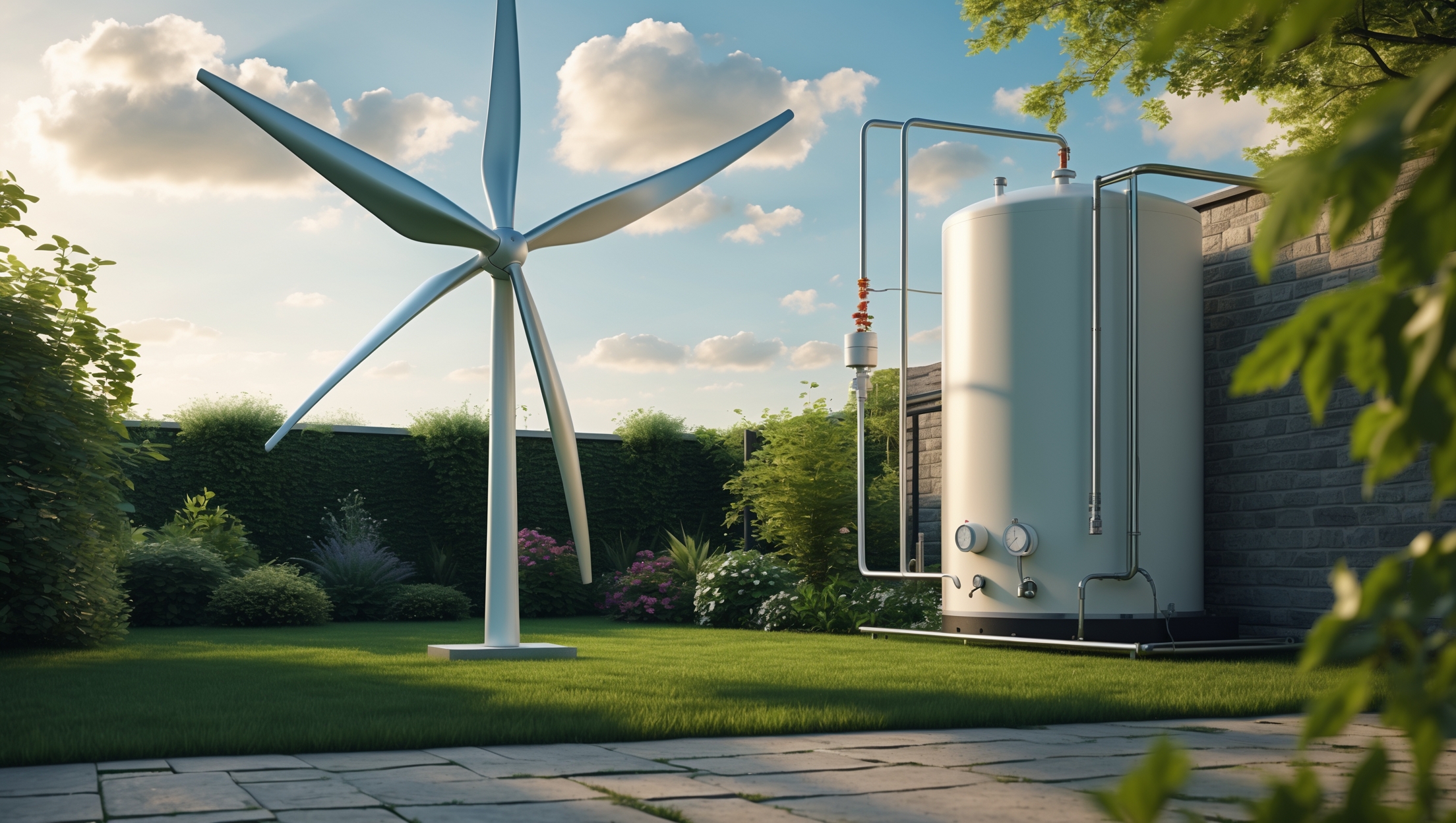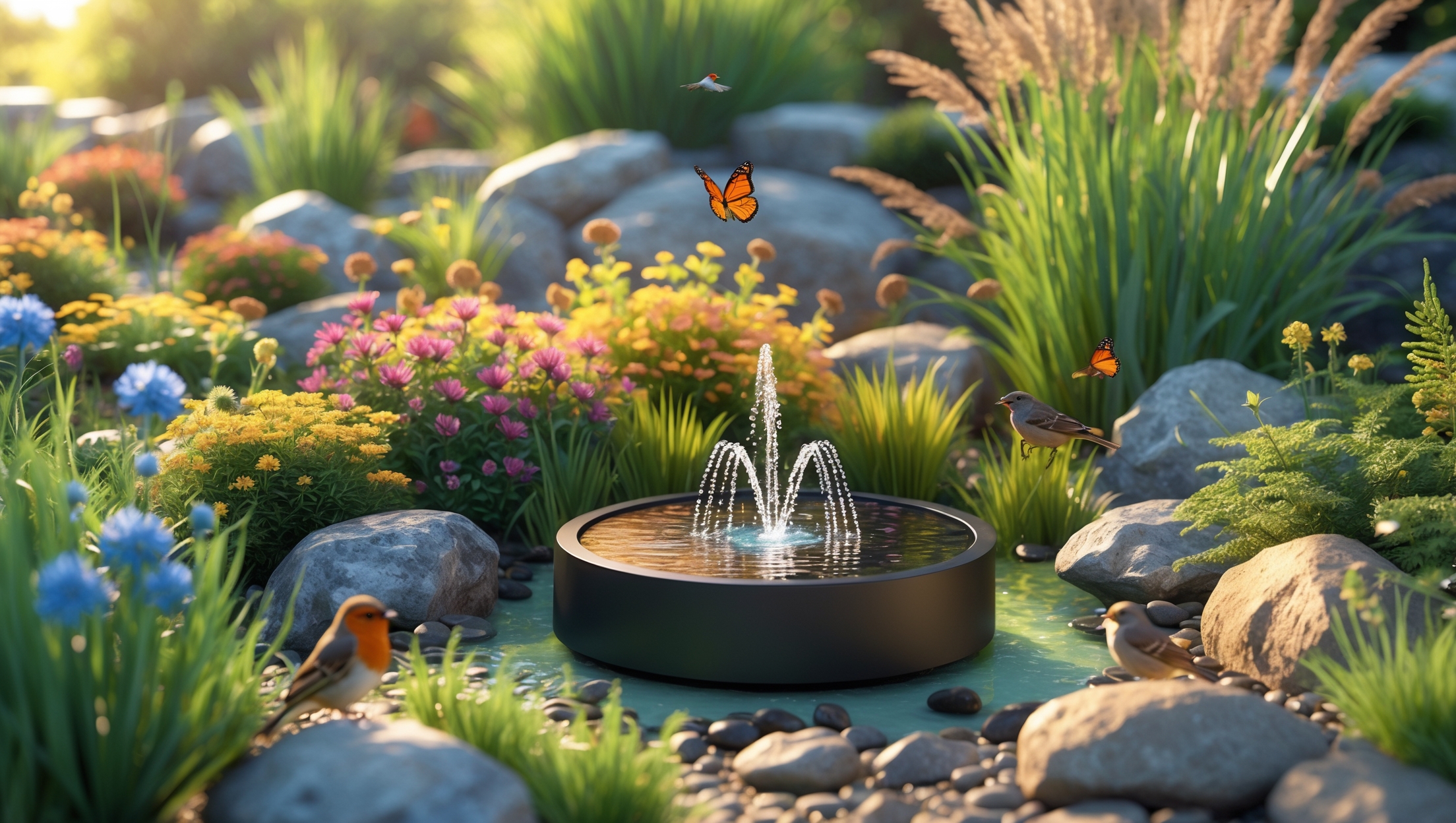Introduction: Why Seasonal Maintenance Matters for Wind-Powered Water Heating Systems
Wind-powered water heating systems are a cornerstone of sustainable living, offering homeowners a renewable energy solution that reduces reliance on fossil fuels while cutting monthly utility costs. Unlike solar, wind energy isn’t bound by daylight hours, making it an attractive option for consistent water heating—especially in regions with steady breezes. However, the very nature of wind energy means your system is exposed to the elements year-round, from scorching summer heat to icy winter storms. Routine, seasonally tailored maintenance is essential not just for efficiency, but also for safety and longevity. Neglecting small checks can lead to major breakdowns, unexpected expenses, and even voided warranties. This in-depth guide walks you through a comprehensive seasonal checklist, equipping you with actionable steps and expert insights to keep your home-scale wind-powered water heating system operating at peak performance, whatever the weather brings.
Spring: Post-Winter Recovery and System Inspection
Visual Inspection and Debris Removal
After winter, your system may have endured high winds, ice, or snow. Begin with a thorough visual inspection:
- Check Turbine Blades: Look for ice damage, cracks, chips, or warping. Remove any debris, twigs, or bird nests from the blades and hub.
- Inspect Tower and Mounting Hardware: Look for rust, loosened bolts, or corrosion. Pay close attention to guy wires and anchors.
- Examine Electrical Connections: Ensure cables, junction boxes, and conduit are secure and undamaged by freeze-thaw cycles.
Lubrication and Moving Parts
Cold weather can cause lubricants to thicken or degrade. Apply manufacturer-recommended grease or oil to bearings, yaw mechanisms, and any other moving parts. Listen for unusual noises when the turbine spins.
Controller and Monitoring System Check
Reset or recalibrate your charge controller and monitoring system. Spring is an ideal time to update firmware, back up performance logs, and test communication links.
Water Heater Tank and Heat Exchanger
Check the tank and heat exchanger for leaks, rust, or mineral buildup. Flush the tank if necessary, following the manufacturer’s instructions to remove sediment that may have settled during winter.
Summer: Maximizing Efficiency During Peak Output
Blade and Tower Cleaning
Summer can bring dust, pollen, and insects that accumulate on blades, reducing aerodynamic efficiency:
- Use a soft brush and biodegradable soap to clean blades—avoid pressure washers, as they can force water into bearings.
- Wipe down the tower and inspect for bird droppings or insect nests that could interfere with moving parts or airflow.
Thermal System Optimization
With higher ambient temperatures, your water heating system may reach set temperatures faster. To optimize energy use:
- Adjust thermostat settings to prevent overheating.
- Check expansion valves and pressure relief valves for proper function.
- Inspect insulation on hot water pipes—UV exposure can degrade foam and tape.
Monitor for Overproduction
Windy summer thunderstorms can cause brief periods of high production:
- Ensure your dump load or diversion controller is ready to safely dissipate excess energy.
- If your system is grid-tied, verify that export controls are functioning and compliant with local utility rules.
Fall: Preparing for Changing Weather and Increased Load
Blade Balancing and Tightening
Autumn wind gusts can be strong and unpredictable. Ensure blades are properly balanced to minimize wear:
- Check for signs of vibration during operation.
- Use a blade balancing kit if you notice wobble or uneven movement.
- Tighten all fasteners and re-torque according to manufacturer specs.
Water Heater and Pipes: Freeze Prevention
As temperatures drop, focus on freeze prevention:
- Insulate exposed water pipes, valves, and the heat exchanger if located outdoors or in unheated spaces.
- Check for drafts or leaks in enclosures that could allow cold air to reach vulnerable components.
- Test backup heating elements or freeze-protection circuits.
Electrical System Readiness
Shorter days can mean longer periods of system inactivity. Check battery banks (if applicable) for state of charge and top up distilled water in flooded cells. Run system diagnostics to catch any issues early before winter stresses hit.
Winter: Protecting Your Investment in Harsh Conditions
Storm Preparation
Winter storms can be especially hard on wind turbines and water heating systems:
- Engage turbine braking or feathering mechanisms if extreme winds are forecasted.
- Secure all access panels and weatherproof enclosures.
- Store spare parts and tools in a dry, accessible location in case emergency repairs are needed.
Ongoing Monitoring and Quick Response
Check system performance remotely when possible. Look for:
- Unusual dips in output, which could indicate ice on blades or electrical faults.
- Heater tank temperature drops—investigate immediately to prevent frozen pipes or system damage.
Snow and Ice Management
After storms, inspect blades for ice accumulation, which can disrupt balance and efficiency. Use manufacturer-approved de-icing methods—never chip or scrape blades with hard tools. Clear snow from around guy wires and tower base to prevent corrosion and maintain access.
Annual Deep Maintenance: Beyond the Seasonal Checklist
Professional Inspection and Load Testing
At least once a year, schedule a qualified technician to conduct a full inspection and performance test:
- Test all safety shutdown systems, fuses, and disconnects.
- Verify that grounding and lightning protection meet current codes.
- Document wear patterns and generate a maintenance report for warranty compliance.
Component Replacement and Upgrades
Replace worn bearings, corroded connectors, or aging controllers as needed. Consider upgrades to more efficient blades, data monitoring systems, or higher-quality insulation to extend system life and boost performance.
Troubleshooting: Common Issues and How to Address Them
- Low Output: Check for blade fouling, electrical shorts, or low wind conditions. Clean and test components.
- Noisy Operation: Indicates loose hardware or worn bearings. Tighten and lubricate as needed.
- Heater Not Reaching Set Temperature: Inspect thermostat, check for mineral buildup, and ensure adequate wind supply.
- Controller Errors: Consult the manual; update software or reset as required.
Documentation and Record-Keeping: Your Maintenance Log
- Log all inspections, repairs, and part replacements with dates and technician notes.
- Keep copies of warranty documents, installation guides, and manufacturer contacts accessible.
- Regularly review performance logs to spot long-term trends or declining efficiency.
Safety First: Year-Round Best Practices
- Always shut down and lock out the system before performing hands-on maintenance.
- Use appropriate personal protective equipment (PPE), including gloves, eye protection, and fall arrest gear for tower work.
- Never attempt repairs during high winds, storms, or icy conditions.
- If in doubt, consult a certified wind energy technician.
Conclusion: Reliable Green Energy, Every Season
Home-scale wind-powered water heating systems are a remarkable investment in both sustainability and energy independence. However, their efficiency and reliability hinge on proactive, seasonal maintenance. By following this comprehensive checklist, you can ensure your system weathers every season—delivering hot water, lower bills, and peace of mind regardless of what nature throws your way. The extra time spent inspecting, cleaning, and tuning up your system is more than offset by fewer breakdowns, longer system life, and the satisfaction of truly sustainable living. Remember, a well-maintained wind-powered water heating system not only conserves resources but also sets a powerful example for your community. Embrace these best practices, document your progress, and don’t hesitate to seek professional help for complex issues. With diligence and care, your green energy system will provide reliable, eco-friendly hot water for years to come—one season at a time.




When inspecting the turbine blades for damage after winter, how do you distinguish between minor cosmetic chips and something that requires a full blade replacement or repair?
When checking turbine blades after winter, look for small surface scratches or tiny chips—these are usually cosmetic and can often be smoothed or sealed. However, deeper cracks, large missing pieces, splits, or any damage that affects the blade’s shape or strength indicate a need for repair or replacement. If you see exposed fiberglass or signs of structural weakness, it’s best to consult a professional.
I noticed you mentioned checking for rust and corrosion on the tower and mounting hardware after winter. If I spot some mild rust, is there a recommended way to treat it myself, or should I call a professional right away?
If you spot mild rust on your tower or mounting hardware, you can usually handle it yourself. Gently remove the rust with a wire brush or sandpaper, then wipe the area clean. Apply a rust-inhibiting primer and repaint it to protect the metal. If the rust is extensive or you notice any structural damage, it’s best to consult a professional for further inspection and repair.
Could you clarify what type of lubricant is typically recommended for the bearings and yaw mechanisms in most home-scale wind-powered water heating systems? Is there a specific viscosity or product type homeowners should look for after colder months?
For most home-scale wind-powered water heating systems, a high-quality lithium-based grease is typically recommended for lubricating bearings and yaw mechanisms. Look for a grease with good water resistance and suitable for low-temperature operation, especially after colder months. A viscosity rating of NLGI grade 2 is usually appropriate. Always check your system’s manual for any brand or specification preferences to ensure compatibility.
How much time should I realistically set aside for the full spring maintenance checklist? My schedule is tight, and I want to make sure I’m not rushing through crucial steps, especially the electrical inspections.
For a thorough spring maintenance on your home-scale wind-powered water heating system, set aside about 3 to 4 hours. This includes carefully handling the electrical inspections, which typically take up the most time. If you’re new to the process or your system is large, consider splitting the checklist across two sessions to avoid rushing and to make sure everything gets proper attention.
If I find rust or corrosion on the tower or mounting bolts during my spring maintenance, what’s the most cost-effective method for treating it so it doesn’t come back quickly? Would regular anti-rust spray be enough?
If you notice rust or corrosion, start by brushing off all loose rust with a wire brush. Then, apply a rust converter to neutralize any remaining rust. After it dries, use a weather-resistant primer and finish with a durable outdoor paint. Anti-rust spray alone may offer short-term protection, but a full prep and paint approach will give you much longer-lasting results.